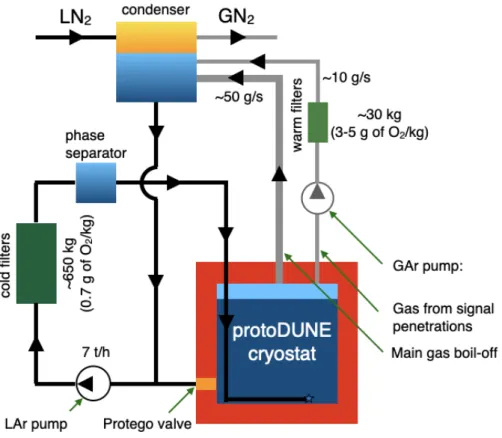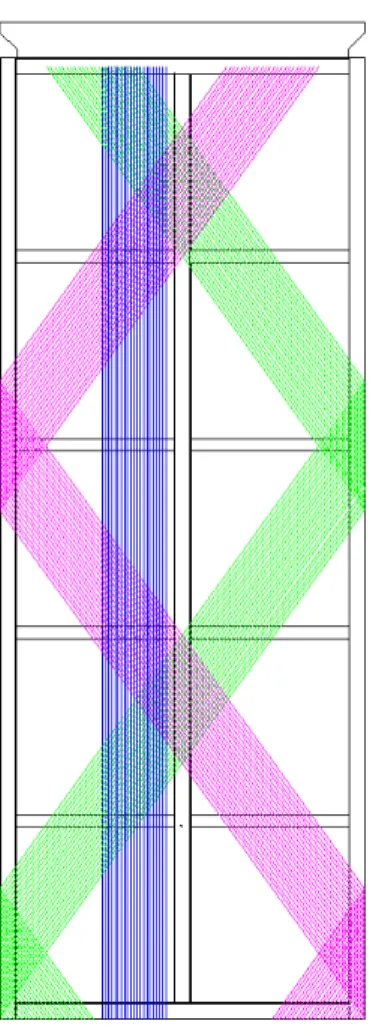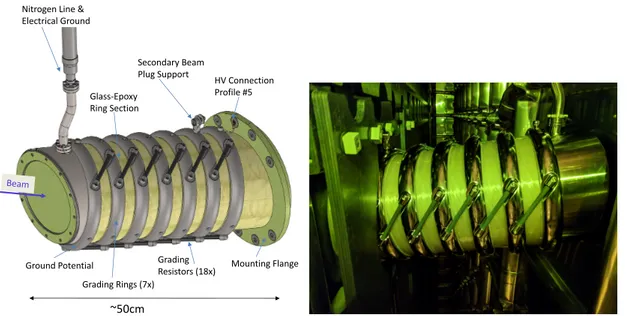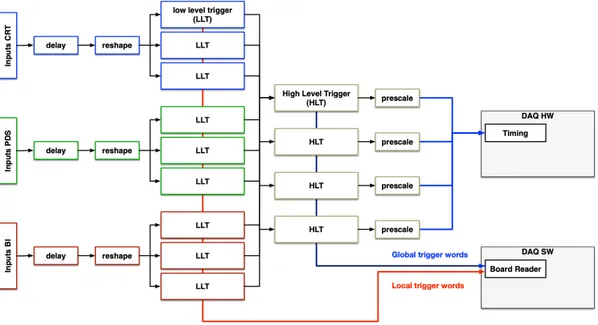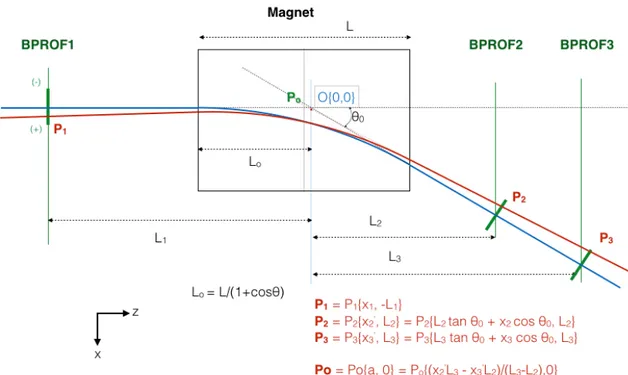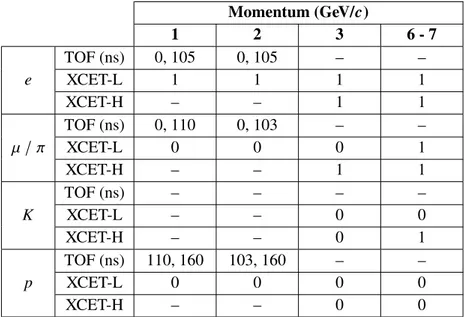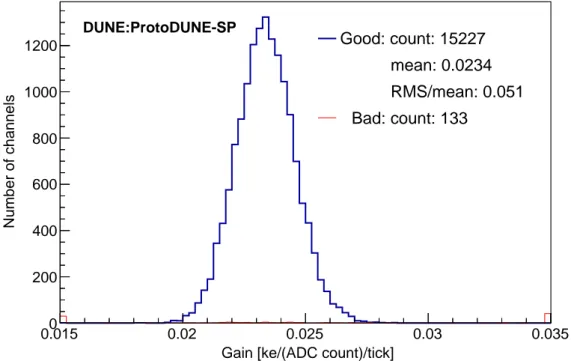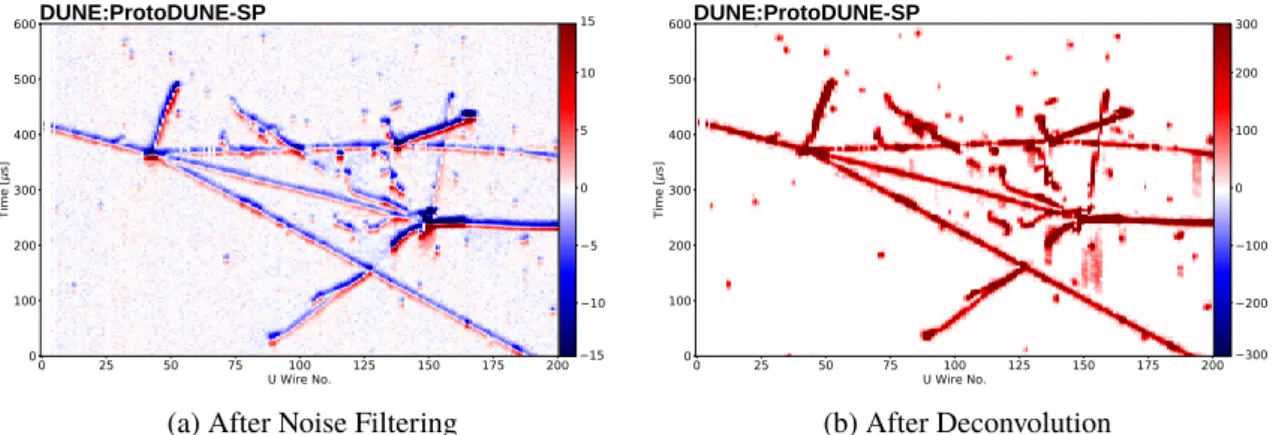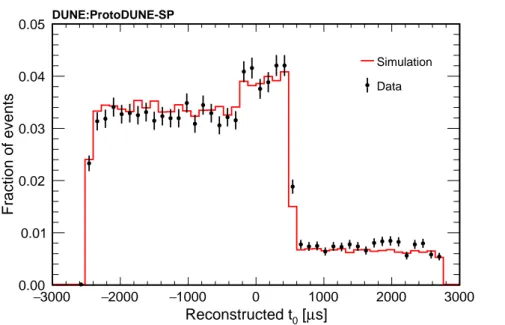FERMILAB-PUB-20-059-AD-ESH-LBNF-ND-SCD CERN-EP-2020-125
First results on ProtoDUNE-SP liquid argon time
projection chamber performance from a beam test at the
CERN Neutrino Platform
The DUNE Collaboration
B. Abi,142A. Abed Abud,21,118R. Acciarri,61M. A. Acero,8G. Adamov,65M. Adamowski,61 D. Adams,17P. Adrien,21M. Adinolfi,16Z. Ahmad,182J. Ahmed,185T. Alion,171S. Alonso Monsalve,21C. Alt,53J. Anderson,4C. Andreopoulos,159,118M. P. Andrews,61F. Andrianala,2 S. Andringa,114A. Ankowski,160M. Antonova,77S. Antusch,10A. Aranda-Fernandez,39 A. Ariga,11L. O. Arnold,42M. A. Arroyave,52J. Asaadi,175A. Aurisano,37V. Aushev,113 D. Autiero,90F. Azfar,142H. Back,143J. J. Back,185C. Backhouse,180P. Baesso,16L. Bagby,61 R. Bajou,145S. Balasubramanian,189P. Baldi,26B. Bambah,75F. Barao,114,92G. Barenboim,77 G. J. Barker,185W. Barkhouse,136C. Barnes,125G. Barr,142J. Barranco Monarca,70
N. Barros,114,55J. L. Barrow,173,61A. Bashyal,141V. Basque,123F. Bay,135J. L. Bazo Alba,152 J. F. Beacom,140E. Bechetoille,90B. Behera,41L. Bellantoni,61G. Bellettini,150V. Bellini,33,80 O. Beltramello,21D. Belver,22N. Benekos,21F. Bento Neves,114J. Berger,151S. Berkman,61 P. Bernardini,82,162R. M. Berner,11H. Berns,25S. Bertolucci,79,14M. Betancourt,61
Y. Bezawada,25M. Bhattacharjee,96B. Bhuyan,96S. Biagi,88J. Bian,26M. Biassoni,83 K. Biery,61B. Bilki,12,100M. Bishai,17A. Bitadze,123A. Blake,116B. Blanco Siffert,60 F. D. M. Blaszczyk,61G. C. Blazey,137E. Blucher,35J. Boissevain,119S. Bolognesi,20 T. Bolton,110M. Bonesini,83,127M. Bongrand,115F. Bonini,17A. Booth,171C. Booth,164
S. Bordoni,21A. Borkum,171T. Boschi,51N. Bostan,100P. Bour,44S. B. Boyd,185D. Boyden,137 J. Bracinik,13D. Braga,61D. Brailsford,116A. Brandt,175J. Bremer,21C. Brew,159
E. Brianne,123S. J. Brice,61C. Brizzolari,83,127C. Bromberg,126G. Brooijmans,42J. Brooke,16 A. Bross,61G. Brunetti,86N. Buchanan,41H. Budd,156D. Caiulo,90P. Calafiura,117
J. Calcutt,126M. Calin,18S. Calvez,41E. Calvo,22L. Camilleri,42A. Caminata,81
M. Campanelli,180D. Caratelli,61G. Carini,17B. Carlus,90P. Carniti,83I. Caro Terrazas,41 H. Carranza,175A. Castillo,163C. Castromonte,99C. Cattadori,83F. Cavalier,115F. Cavanna,61 S. Centro,144G. Cerati,61A. Cervelli,79A. Cervera Villanueva,77M. Chalifour,21C. Chang,28 E. Chardonnet,145N. Charitonidis,21A. Chatterjee,151S. Chattopadhyay,182P. Chatzidaki,21 J. Chaves,147H. Chen,17M. Chen,26Y. Chen,11D. Cherdack,74C. Chi,42S. Childress,61 A. Chiriacescu,18K. Cho,108S. Choubey,71A. Christensen,41D. Christian,61
G. Christodoulou,21E. Church,143P. Clarke,54T. E. Coan,168A. G. Cocco,85
J. A. B. Coelho,115E. Conley,50J. M. Conrad,124M. Convery,160L. Corwin,165P. Cotte,20 L. Cremaldi,131L. Cremonesi,180J. I. Crespo-Anadón,22E. Cristaldo,6R. Cross,116
C. Cuesta,22Y. Cui,28D. Cussans,16M. Dabrowski,17H. da Motta,19L. Da Silva Peres,60 C. David,61,191Q. David,90G. S. Davies,131S. Davini,81J. Dawson,145K. De,175R. M. De Almeida,63P. Debbins,100I. De Bonis,47M. P. Decowski,135,1A. de Gouvêa,138P. C. De Holanda,32I. L. De Icaza Astiz,171A. Deisting,157P. De Jong,135,1A. Delbart,20D. Delepine,70 M. Delgado,3A. Dell’Acqua,21P. De Lurgio,4J. R. T. de Mello Neto,60D. M. DeMuth,181 S. Dennis,31C. Densham,159G. Deptuch,61A. De Roeck,21V. De Romeri,77J. J. De Vries,31 R. Dharmapalan,73M. Dias,179F. Diaz,152J. S. Díaz,98S. Di Domizio,81,64L. Di Giulio,21 P. Ding,61L. Di Noto,81,64C. Distefano,88R. Diurba,130M. Diwan,17Z. Djurcic,4N. Dokania,169 M. J. Dolinski,49L. Domine,160D. Douglas,126F. Drielsma,160D. Duchesneau,47K. Duffy,61 P. Dunne,95T. Durkin,159H. Duyang,167O. Dvornikov,73D. A. Dwyer,117A. S. Dyshkant,137 M. Eads,137D. Edmunds,126J. Eisch,101S. Emery,20A. Ereditato,11C. O. Escobar,61 L. Escudero Sanchez,31J. J. Evans,123E. Ewart,98A. C. Ezeribe,164C. Fabre,21K. Fahey,61 A. Falcone,83,127C. Farnese,144Y. Farzan,91J. Felix,70E. Fernandez-Martinez,122
P. Fernandez Menendez,77F. Ferraro,81,64L. Fields,61A. Filkins,187F. Filthaut,135,155 R. S. Fitzpatrick,125W. Flanagan,46B. Fleming,189R. Flight,156J. Fowler,50W. Fox,98 J. Franc,44K. Francis,137D. Franco,189J. Freeman,61J. Freestone,123J. Fried,17 A. Friedland,160S. Fuess,61I. Furic,62A. P. Furmanski,130A. Gago,152H. Gallagher,178 A. Gallego-Ros,22N. Gallice,84,128V. Galymov,90E. Gamberini,21T. Gamble,164R. Gandhi,71 R. Gandrajula,126S. Gao,17D. Garcia-Gamez,68M. Á. García-Peris,77S. Gardiner,61
D. Gastler,15G. Ge,42B. Gelli,32A. Gendotti,53S. Gent,166Z. Ghorbani-Moghaddam,81 D. Gibin,144I. Gil-Botella,22C. Girerd,90A. K. Giri,97D. Gnani,117O. Gogota,113M. Gold,133 S. Gollapinni,119K. Gollwitzer,61R. A. Gomes,57L. V. Gomez Bermeo,163L. S. Gomez Fajardo,163F. Gonnella,13J. A. Gonzalez-Cuevas,6M. C. Goodman,4O. Goodwin,123 S. Goswami,149C. Gotti,83E. Goudzovski,13C. Grace,117M. Graham,160E. Gramellini,189 R. Gran,129E. Granados,70A. Grant,48C. Grant,15D. Gratieri,63P. Green,123S. Green,31 L. Greenler,188M. Greenwood,141J. Greer,16W. C. Griffith,171M. Groh,98J. Grudzinski,4 K. Grzelak,184W. Gu,17V. Guarino,4R. Guenette,72A. Guglielmi,86B. Guo,167
K. K. Guthikonda,109R. Gutierrez,3P. Guzowski,123M. M. Guzzo,32S. Gwon,36K. Haaf,61 A. Habig,129A. Hackenburg,189H. Hadavand,175R. Haenni,11A. Hahn,61J. Haigh,185 J. Haiston,165T. Hamernik,61P. Hamilton,95J. Han,151K. Harder,159D. A. Harris,61,191 J. Hartnell,171T. Hasegawa,107R. Hatcher,61E. Hazen,15A. Heavey,61K. M. Heeger,189 J. Heise,161K. Hennessy,118S. Henry,156M. A. Hernandez Morquecho,70K. Herner,61 L. Hertel,26A. S. Hesam,21J. Hewes,37A. Higuera,74T. Hill,93S. J. Hillier,13A. Himmel,61 J. Hoff,61C. Hohl,10A. Holin,180E. Hoppe,143G. A. Horton-Smith,110M. Hostert,51
A. Hourlier,124B. Howard,61R. Howell,156J. Hrivnak,21J. Huang,176J. Huang,25J. Hugon,120 G. Iles,95N. Ilic,177A. M. Iliescu,79R. Illingworth,61A. Ioannisian,190R. Itay,160A. Izmaylov,77 E. James,61B. Jargowsky,26F. Jediny,44C. Jesùs-Valls,76X. Ji,17L. Jiang,183S. Jiménez,22 A. Jipa,18A. Joglekar,28C. Johnson,41R. Johnson,37B. Jones,175S. Jones,180C. K. Jung,169 T. Junk,61Y. Jwa,42M. Kabirnezhad,142A. Kaboth,159I. Kadenko,113F. Kamiya,59
G. Karagiorgi,42A. Karcher,117M. Karolak,20Y. Karyotakis,47S. Kasai,112S. P. Kasetti,120 L. Kashur,41N. Kazaryan,190E. Kearns,15P. Keener,147K. J. Kelly,61E. Kemp,32
C. Kendziora,61W. Ketchum,61S. H. Kettell,17M. Khabibullin,89A. Khotjantsev,89 A. Khvedelidze,65D. Kim,21B. King,61B. Kirby,17M. Kirby,61J. Klein,147K. Koehler,188
L. W. Koerner,74S. Kohn,24,117P. P. Koller,11M. Kordosky,187T. Kosc,90U. Kose,21 V. A. Kostelecký,98K. Kothekar,16F. Krennrich,101I. Kreslo,11Y. Kudenko,89
V. A. Kudryavtsev,164S. Kulagin,89J. Kumar,73R. Kumar,154C. Kuruppu,167V. Kus,44 T. Kutter,120B. Lacarelle,21A. Lambert,117K. Lande,147C. E. Lane,49K. Lang,176 T. Langford,189P. Lasorak,171D. Last,147C. Lastoria,22A. Laundrie,188A. Lawrence,117 I. Lazanu,18R. LaZur,41T. Le,178J. Learned,73P. LeBrun,90G. Lehmann Miotto,21
R. Lehnert,98M. A. Leigui de Oliveira,59M. Leitner,117M. Leyton,76L. Li,26S. Li,17S. W. Li,160 T. Li,54Y. Li,17H. Liao,110C. S. Lin,117S. Lin,120A. Lister,188B. R. Littlejohn,94J. Liu,26 T. Liu,35S. Lockwitz,61T. Loew,117M. Lokajicek,43I. Lomidze,65K. Long,95K. Loo,106 D. Lorca,11T. Lord,185J. M. LoSecco,139W. C. Louis,119K.B. Luk,24,117X. Luo,29N. Lurkin,13 T. Lux,76V. P. Luzio,59D. MacFarland,160A. A. Machado,32P. Machado,61C. T. Macias,98 J. R. Macier,61A. Maddalena,67P. Madigan,24,117S. Magill,4K. Mahn,126A. Maio,114,55 J. A. Maloney,45G. Mandrioli,79J. Maneira,114,55L. Manenti,180S. Manly,156A. Mann,178 K. Manolopoulos,159M. Manrique Plata,98A. Marchionni,61W. Marciano,17D. Marfatia,73 C. Mariani,183J. Maricic,73F. Marinho,58A. D. Marino,40M. Marshak,130C. Marshall,117 J. Marshall,185J. Marteau,90J. Martin-Albo,77N. Martinez,110D.A. Martinez Caicedo ,165 S. Martynenko,169K. Mason,178A. Mastbaum,158M. Masud,77S. Matsuno,73J. Matthews,120 C. Mauger,147N. Mauri,79,14K. Mavrokoridis,118R. Mazza,83A. Mazzacane,61E. Mazzucato,20 E. McCluskey,61N. McConkey,123K. S. McFarland,156C. McGrew,169A. McNab,123
A. Mefodiev,89P. Mehta,104P. Melas,7M. Mellinato,83,127O. Mena,77S. Menary,191 H. Mendez,153A. Menegolli,87,146G. Meng,86M. D. Messier,98W. Metcalf,120M. Mewes,98 H. Meyer,186T. Miao,61G. Michna,166T. Miedema,135,155J. Migenda,164R. Milincic,73
W. Miller,130J. Mills,178C. Milne,93O. Mineev,89O. G. Miranda,38S. Miryala,17C. S. Mishra,61 S. R. Mishra,167A. Mislivec,130D. Mladenov,21I. Mocioiu,148K. Moffat,51N. Moggi,79,14 R. Mohanta,75T. A. Mohayai,61N. Mokhov,61J. Molina,6L. Molina Bueno,53A. Montanari,79 C. Montanari,87,146D. Montanari,61L. M. Montano Zetina,38J. Moon,124M. Mooney,41 A. Moor,31D. Moreno,3B. Morgan,185C. Morris,74C. Mossey,61E. Motuk,180C. A. Moura,59 J. Mousseau,125W. Mu,61L. Mualem,30J. Mueller,41M. Muether,186S. Mufson,98F. Muheim,54 A. Muir,48M. Mulhearn,25H. Muramatsu,130S. Murphy,53J. Musser,98J. Nachtman,100
S. Nagu,121M. Nalbandyan,190R. Nandakumar,159D. Naples,151S. Narita,102
D. Navas-Nicolás,22N. Nayak,26M. Nebot-Guinot,54L. Necib,30K. Negishi,102J. K. Nelson,187 J. Nesbit,188M. Nessi,21D. Newbold,159M. Newcomer,147D. Newhart,61R. Nichol,180
E. Niner,61K. Nishimura,73A. Norman,61A. Norrick,61R. Northrop,35P. Novella,77 J. A. Nowak,116M. Oberling,4A. Olivares Del Campo,51A. Olivier,156Y. Onel,100 Y. Onishchuk,113J. Ott,26L. Pagani,25S. Pakvasa,73O. Palamara,61S. Palestini,21 J. M. Paley,61M. Pallavicini,81,64C. Palomares,22E. Pantic,25V. Paolone,151
V. Papadimitriou,61R. Papaleo,88A. Papanestis,159S. Paramesvaran,16S. Parke,61 Z. Parsa,17M. Parvu,18S. Pascoli,51L. Pasqualini,79,14J. Pasternak,95J. Pater,123 C. Patrick,180L. Patrizii,79R. B. Patterson,30S. J. Patton,117T. Patzak,145A. Paudel,110 B. Paulos,188L. Paulucci,59Z. Pavlovic,61G. Pawloski,130D. Payne,118V. Pec,164
S. J. M. Peeters,171Y. Penichot,20E. Pennacchio,90A. Penzo,100O. L. G. Peres,32J. Perry,54 D. Pershey,50G. Pessina,83G. Petrillo,160C. Petta,33,80R. Petti,167F. Piastra,11
X. Pons,21N. Poonthottathil,101S. Pordes,61M. Potekhin,17R. Potenza,33,80
B. V. K. S. Potukuchi,103J. Pozimski,95M. Pozzato,79,14S. Prakash,32T. Prakash,117 S. Prince,72G. Prior,114D. Pugnere,90K. Qi,169X. Qian,17J. L. Raaf,61R. Raboanary,2 V. Radeka,17J. Rademacker,16B. Radics,53A. Rafique,4E. Raguzin,17M. Rai,185 M. Rajaoalisoa,37I. Rakhno,61H. T. Rakotondramanana,2L. Rakotondravohitra,2
Y. A. Ramachers,185R. Rameika,61M. A. Ramirez Delgado,70B. Ramson,61A. Rappoldi,87,146 G. Raselli,87,146P. Ratoff,116S. Ravat,21H. Razafinime,2J. S. Real,69B. Rebel,188,61
D. Redondo,22M. Reggiani-Guzzo,32T. Rehak,49J. Reichenbacher,165S. D. Reitzner,61 A. Renshaw,74S. Rescia,17F. Resnati,21A. Reynolds,142G. Riccobene,88L. C. J. Rice,151 K. Rielage,119A. Rigamonti,21Y. Rigaut,53D. Rivera,147L. Rochester,160M. Roda,118 P. Rodrigues,142M. J. Rodriguez Alonso,21J. Rodriguez Rondon,165A. J. Roeth,50
H. Rogers,41S. Rosauro-Alcaraz,122M. Rosenthal,21M. Rossella,87,146J. Rout,104S. Roy,71 A. Rubbia,53C. Rubbia,66B. Russell,117J. Russell,160D. Ruterbories,156R. Saakyan,180 S. Sacerdoti,145T. Safford,126N. Sahu,97P. Sala,84,21G. Salukvadze,21N. Samios,17 M. C. Sanchez,101D. A. Sanders,131D. Sankey,159S. Santana,153M. Santos-Maldonado,153 N. Saoulidou,7P. Sapienza,88C. Sarasty,37I. Sarcevic,5G. Savage,61V. Savinov,151
A. Scaramelli,87A. Scarff,164A. Scarpelli,17H. Schellman,141,61P. Schlabach,61D. Schmitz,35 K. Scholberg,50A. Schukraft,61E. Segreto,32E. Seltskaya,21J. Sensenig,147I. Seong,26 A. Sergi,13F. Sergiampietri,169D. Sgalaberna,53M. H. Shaevitz,42S. Shafaq,104M. Shamma,28 H. R. Sharma,103R. Sharma,17T. Shaw,61C. Shepherd-Themistocleous,159S. Shin,105
D. Shooltz,126R. Shrock,169L. Simard,115N. Simos,17J. Sinclair,11G. Sinev,50J. Singh,121 J. Singh,121V. Singh,23,9R. Sipos,21F. W. Sippach,42G. Sirri,79A. Sitraka,165K. Siyeon,36 D. Smargianaki,169A. Smith,50A. Smith,31E. Smith,98P. Smith,98J. Smolik,44M. Smy,26 P. Snopok,94M. Soares Nunes,32H. Sobel,26M. Soderberg,172C. J. Solano Salinas,99 S. Söldner-Rembold,123N. Solomey,186V. Solovov,114W. E. Sondheim,119M. Sorel,77 J. Soto-Oton,22A. Sousa,37K. Soustruznik,34F. Spagliardi,142M. Spanu,17J. Spitz,125 N. J. C. Spooner,164K. Spurgeon,172R. Staley,13M. Stancari,61L. Stanco,86D. Stefan,21 H. M. Steiner,117J. Stewart,17B. Stillwell,35J. Stock,165F. Stocker,21T. Stokes,120M. Strait,130 T. Strauss,61S. Striganov,61A. Stuart,39R. Sulej,132,61D. Summers,131A. Surdo,82V. Susic,10 L. Suter,61C. M. Sutera,33,80R. Svoboda,25B. Szczerbinska,174A. M. Szelc,123R. Talaga,4H. A. Tanaka,160B. Tapia Oregui,176A. Tapper,95S. Tariq,61E. Tatar,93R. Tayloe,98
A. M. Teklu,169M. Tenti,79K. Terao,160C. A. Ternes,77F. Terranova,83,127G. Testera,81 A. Thea,159J. L. Thompson,164C. Thorn,17S. C. Timm,61A. Tonazzo,145M. Torti,83,127 M. Tortola,77F. Tortorici,33,80D. Totani,61M. Toups,61C. Touramanis,118J. Trevor,30 W. H. Trzaska,106Y. T. Tsai,160Z. Tsamalaidze,65K. V. Tsang,160N. Tsverava,65S. Tufanli,21 C. Tull,117E. Tyley,164M. Tzanov,120M. A. Uchida,31J. Urheim,98T. Usher,160M. R. Vagins,111 P. Vahle,187G. A. Valdiviesso,56E. Valencia,187Z. Vallari,30J. W. F. Valle,77S. Vallecorsa,21 R. Van Berg,147R. G. Van de Water,119D. Vanegas Forero,32F. Varanini,86D. Vargas,76 G. Varner,73J. Vasel,98G. Vasseur,20K. Vaziri,61S. Ventura,86A. Verdugo,22S. Vergani,31 M. A. Vermeulen,135M. Verzocchi,61H. Vieira de Souza,32C. Vignoli,67C. Vilela,169B. Viren,17 T. Vrba,44T. Wachala,134A. V. Waldron,95M. Wallbank,37H. Wang,27J. Wang,25Y. Wang,27 Y. Wang,169K. Warburton,101D. Warner,41M. Wascko,95D. Waters,180A. Watson,13
M. Wetstein,101M. R. While,165A. White,175L. H. Whitehead,31D. Whittington,172
M. J. Wilking,169C. Wilkinson,11Z. Williams,175F. Wilson,159R. J. Wilson,41J. Wolcott,178 T. Wongjirad,178K. Wood,169L. Wood,143E. Worcester,17M. Worcester,17C. Wret,156W. Wu,61 W. Wu,26Y. Xiao,26G. Yang,169T. Yang,61N. Yershov,89K. Yonehara,61T. Young,136B. Yu,17 H. W. Yu,17H. Z. Yu,170J. Yu,175Z. Y. Yu,78R. Zaki,191J. Zalesak,43L. Zambelli,47
B. Zamorano,68A. Zani,21,84L. Zazueta,187G. P. Zeller,61J. Zennamo,61K. Zeug,188
C. Zhang,17M. Zhao,17E. Zhivun,17G. Zhu,140E. D. Zimmerman,40M. Zito,20S. Zucchelli,79,14 J. Zuklin,43V. Zutshi,137and R. Zwaska61
1University of Amsterdam, NL-1098 XG Amsterdam, The Netherlands 2University of Antananarivo, Antananarivo 101, Madagascar 3Universidad Antonio Nariño, Bogotá, Colombia
4Argonne National Laboratory, Argonne, IL 60439, USA 5University of Arizona, Tucson, AZ 85721, USA
6Universidad Nacional de Asunción, San Lorenzo, Paraguay 7University of Athens, Zografou GR 157 84, Greece
8Universidad del Atlántico, Atlántico, Colombia 9Banaras Hindu University, Varanasi - 221 005, India 10University of Basel, CH-4056 Basel, Switzerland 11University of Bern, CH-3012 Bern, Switzerland 12Beykent University, Istanbul, Turkey
13University of Birmingham, Birmingham B15 2TT, United Kingdom 14Università del Bologna, 40127 Bologna, Italy
15Boston University, Boston, MA 02215, USA
16University of Bristol, Bristol BS8 1TL, United Kingdom 17Brookhaven National Laboratory, Upton, NY 11973, USA 18University of Bucharest, Bucharest, Romania
19Centro Brasileiro de Pesquisas Físicas, Rio de Janeiro, RJ 22290-180, Brazil
20CEA/Saclay, IRFU Institut de Recherche sur les Lois Fondamentales de l’Univers, F-91191 Gif-sur-Yvette
CEDEX, France
21CERN, The European Organization for Nuclear Research, 1211 Meyrin, Switzerland
22CIEMAT, Centro de Investigaciones Energéticas, Medioambientales y Tecnológicas, E-28040 Madrid,
Spain
23Central University of South Bihar, Gaya – 824236, India 24University of California Berkeley, Berkeley, CA 94720, USA 25University of California Davis, Davis, CA 95616, USA 26University of California Irvine, Irvine, CA 92697, USA
27University of California Los Angeles, Los Angeles, CA 90095, USA 28University of California Riverside, Riverside CA 92521, USA
29University of California Santa Barbara, Santa Barbara, California 93106 USA 30California Institute of Technology, Pasadena, CA 91125, USA
31University of Cambridge, Cambridge CB3 0HE, United Kingdom 32Universidade Estadual de Campinas, Campinas - SP, 13083-970, Brazil 33Università di Catania, 2 - 95131 Catania, Italy
34Institute of Particle and Nuclear Physics of the Faculty of Mathematics and Physics of the Charles University,
180 00 Prague 8, Czech Republic
35University of Chicago, Chicago, IL 60637, USA 36Chung-Ang University, Seoul 06974, South Korea 37University of Cincinnati, Cincinnati, OH 45221, USA
38Centro de Investigación y de Estudios Avanzados del Instituto Politécnico Nacional (Cinvestav), Mexico
City, Mexico
39Universidad de Colima, Colima, Mexico
40University of Colorado Boulder, Boulder, CO 80309, USA 41Colorado State University, Fort Collins, CO 80523, USA 42Columbia University, New York, NY 10027, USA
43Institute of Physics, Czech Academy of Sciences, 182 00 Prague 8, Czech Republic 44Czech Technical University, 115 19 Prague 1, Czech Republic
45Dakota State University, Madison, SD 57042, USA 46University of Dallas, Irving, TX 75062-4736, USA
47Laboratoire d’Annecy-le-Vieux de Physique des Particules, CNRS/IN2P3 and Université Savoie Mont
Blanc, 74941 Annecy-le-Vieux, France
48Daresbury Laboratory, Cheshire WA4 4AD, United Kingdom 49Drexel University, Philadelphia, PA 19104, USA
50Duke University, Durham, NC 27708, USA
51Durham University, Durham DH1 3LE, United Kingdom 52Universidad EIA, Antioquia, Colombia
53ETH Zurich, Zurich, Switzerland
54University of Edinburgh, Edinburgh EH8 9YL, United Kingdom
55Faculdade de Ciências da Universidade de Lisboa - FCUL, 1749-016 Lisboa, Portugal 56Universidade Federal de Alfenas, Poços de Caldas - MG, 37715-400, Brazil
57Universidade Federal de Goias, Goiania, GO 74690-900, Brazil 58Universidade Federal de São Carlos, Araras - SP, 13604-900, Brazil 59Universidade Federal do ABC, Santo André - SP, 09210-580 Brazil
60Universidade Federal do Rio de Janeiro, Rio de Janeiro - RJ, 21941-901, Brazil 61Fermi National Accelerator Laboratory, Batavia, IL 60510, USA
62University of Florida, Gainesville, FL 32611-8440, USA
63Fluminense Federal University, 9 Icaraí Niterói - RJ, 24220-900, Brazil 64Università degli Studi di Genova, Genova, Italy
65Georgian Technical University, Tbilisi, Georgia 66Gran Sasso Science Institute, L’Aquila, Italy
67Laboratori Nazionali del Gran Sasso, L’Aquila AQ, Italy 68University of Granada & CAFPE, 18002 Granada, Spain
69University Grenoble Alpes, CNRS, Grenoble INP, LPSC-IN2P3, 38000 Grenoble, France 70Universidad de Guanajuato, Guanajuato, C.P. 37000, Mexico
71Harish-Chandra Research Institute, Jhunsi, Allahabad 211 019, India 72Harvard University, Cambridge, MA 02138, USA
73University of Hawaii, Honolulu, HI 96822, USA 74University of Houston, Houston, TX 77204, USA
75University of Hyderabad, Gachibowli, Hyderabad - 500 046, India 76Institut de Fìsica d’Altes Energies, Barcelona, Spain
77Instituto de Fisica Corpuscular, 46980 Paterna, Valencia, Spain 78Institute of High Energy Physics, 100049 Beijing, China
79Istituto Nazionale di Fisica Nucleare Sezione di Bologna, 40127 Bologna BO, Italy 80Istituto Nazionale di Fisica Nucleare Sezione di Catania, I-95123 Catania, Italy 81Istituto Nazionale di Fisica Nucleare Sezione di Genova, 16146 Genova GE, Italy 82Istituto Nazionale di Fisica Nucleare Sezione di Lecce, 73100 - Lecce, Italy
83Istituto Nazionale di Fisica Nucleare Sezione di Milano Bicocca, 3 - I-20126 Milano, Italy 84Istituto Nazionale di Fisica Nucleare Sezione di Milano, 20133 Milano, Italy
85Istituto Nazionale di Fisica Nucleare Sezione di Napoli, I-80126 Napoli, Italy 86Istituto Nazionale di Fisica Nucleare Sezione di Padova, 35131 Padova, Italy 87Istituto Nazionale di Fisica Nucleare Sezione di Pavia, I-27100 Pavia, Italy
88Istituto Nazionale di Fisica Nucleare Laboratori Nazionali del Sud, 95123 Catania, Italy 89Institute for Nuclear Research of the Russian Academy of Sciences, Moscow 117312, Russia 90Institut de Physique des 2 Infinis de Lyon, 69622 Villeurbanne, France
91Institute for Research in Fundamental Sciences, Tehran, Iran 92Instituto Superior Técnico - IST, Universidade de Lisboa, Portugal 93Idaho State University, Pocatello, ID 83209, USA
94Illinois Institute of Technology, Chicago, IL 60616, USA
95Imperial College of Science Technology and Medicine, London SW7 2BZ, United Kingdom 96Indian Institute of Technology Guwahati, Guwahati, 781 039, India
97Indian Institute of Technology Hyderabad, Hyderabad, 502285, India 98Indiana University, Bloomington, IN 47405, USA
99Universidad Nacional de Ingeniería, Lima 25, Perú 100University of Iowa, Iowa City, IA 52242, USA 101Iowa State University, Ames, Iowa 50011, USA 102Iwate University, Morioka, Iwate 020-8551, Japan 103University of Jammu, Jammu-180006, India
104Jawaharlal Nehru University, New Delhi 110067, India
105Jeonbuk National University, Jeonrabuk-do 54896, South Korea 106University of Jyvaskyla, FI-40014, Finland
107High Energy Accelerator Research Organization (KEK), Ibaraki, 305-0801, Japan 108Korea Institute of Science and Technology Information, Daejeon, 34141, South Korea 109K L University, Vaddeswaram, Andhra Pradesh 522502, India
110Kansas State University, Manhattan, KS 66506, USA
111Kavli Institute for the Physics and Mathematics of the Universe, Kashiwa, Chiba 277-8583, Japan 112National Institute of Technology, Kure College, Hiroshima, 737-8506, Japan
113Kyiv National University, 01601 Kyiv, Ukraine
114Laboratório de Instrumentação e Física Experimental de Partículas, 1649-003 Lisboa and 3004-516
Coimbra, Portugal
115Laboratoire de l’Accélérateur Linéaire, 91440 Orsay, France 116Lancaster University, Lancaster LA1 4YB, United Kingdom 117Lawrence Berkeley National Laboratory, Berkeley, CA 94720, USA
118University of Liverpool, L69 7ZE, Liverpool, United Kingdom 119Los Alamos National Laboratory, Los Alamos, NM 87545, USA 120Louisiana State University, Baton Rouge, LA 70803, USA 121University of Lucknow, Uttar Pradesh 226007, India
122Madrid Autonoma University and IFT UAM/CSIC, 28049 Madrid, Spain 123University of Manchester, Manchester M13 9PL, United Kingdom 124Massachusetts Institute of Technology, Cambridge, MA 02139, USA 125University of Michigan, Ann Arbor, MI 48109, USA
126Michigan State University, East Lansing, MI 48824, USA 127Università del Milano-Bicocca, 20126 Milano, Italy 128Università degli Studi di Milano, I-20133 Milano, Italy 129University of Minnesota Duluth, Duluth, MN 55812, USA
130University of Minnesota Twin Cities, Minneapolis, MN 55455, USA 131University of Mississippi, University, MS 38677 USA
132National Centre for Nuclear Research, A. Soltana 7, 05 400 Otwock, Poland 133University of New Mexico, Albuquerque, NM 87131, USA
134H. Niewodniczański Institute of Nuclear Physics, Polish Academy of Sciences, Cracow, Poland 135Nikhef National Institute of Subatomic Physics, 1098 XG Amsterdam, Netherlands
136University of North Dakota, Grand Forks, ND 58202-8357, USA 137Northern Illinois University, DeKalb, Illinois 60115, USA 138Northwestern University, Evanston, Il 60208, USA 139University of Notre Dame, Notre Dame, IN 46556, USA 140Ohio State University, Columbus, OH 43210, USA 141Oregon State University, Corvallis, OR 97331, USA 142University of Oxford, Oxford, OX1 3RH, United Kingdom
143Pacific Northwest National Laboratory, Richland, WA 99352, USA 144Universtà degli Studi di Padova, I-35131 Padova, Italy
145Université de Paris, CNRS, Astroparticule et Cosmologie, F-75006, Paris, France 146Università degli Studi di Pavia, 27100 Pavia PV, Italy
147University of Pennsylvania, Philadelphia, PA 19104, USA 148Pennsylvania State University, University Park, PA 16802, USA 149Physical Research Laboratory, Ahmedabad 380 009, India 150Università di Pisa, I-56127 Pisa, Italy
151University of Pittsburgh, Pittsburgh, PA 15260, USA 152Pontificia Universidad Católica del Perú, Lima, Perú
153University of Puerto Rico, Mayaguez 00681, Puerto Rico, USA 154Punjab Agricultural University, Ludhiana 141004, India 155Radboud University, NL-6525 AJ Nijmegen, Netherlands 156University of Rochester, Rochester, NY 14627, USA
157Royal Holloway College London, TW20 0EX, United Kingdom 158Rutgers University, Piscataway, NJ, 08854, USA
159STFC Rutherford Appleton Laboratory, Didcot OX11 0QX, United Kingdom 160SLAC National Accelerator Laboratory, Menlo Park, CA 94025, USA 161Sanford Underground Research Facility, Lead, SD, 57754, USA
162Università del Salento, 73100 Lecce, Italy
163Universidad Sergio Arboleda, 11022 Bogotá, Colombia 164University of Sheffield, Sheffield S3 7RH, United Kingdom
165South Dakota School of Mines and Technology, Rapid City, SD 57701, USA 166South Dakota State University, Brookings, SD 57007, USA
167University of South Carolina, Columbia, SC 29208, USA 168Southern Methodist University, Dallas, TX 75275, USA
169Stony Brook University, SUNY, Stony Brook, New York 11794, USA 170Sun Yat-Sen University, 510275 Guangzhou, China
171University of Sussex, Brighton, BN1 9RH, United Kingdom 172Syracuse University, Syracuse, NY 13244, USA
173University of Tennessee at Knoxville, TN, 37996, USA
174Texas A&M University - Corpus Christi, Corpus Christi, TX 78412, USA 175University of Texas at Arlington, Arlington, TX 76019, USA
176University of Texas at Austin, Austin, TX 78712, USA 177University of Toronto, Toronto, Ontario M5S 1A1, Canada 178Tufts University, Medford, MA 02155, USA
179Universidade Federal de São Paulo, 09913-030, São Paulo, Brazil 180University College London, London, WC1E 6BT, United Kingdom 181Valley City State University, Valley City, ND 58072, USA
182Variable Energy Cyclotron Centre, 700 064 West Bengal, India 183Virginia Tech, Blacksburg, VA 24060, USA
184University of Warsaw, 00-927 Warsaw, Poland
185University of Warwick, Coventry CV4 7AL, United Kingdom 186Wichita State University, Wichita, KS 67260, USA
187William and Mary, Williamsburg, VA 23187, USA
188University of Wisconsin Madison, Madison, WI 53706, USA 189Yale University, New Haven, CT 06520, USA
190Yerevan Institute for Theoretical Physics and Modeling, Yerevan 0036, Armenia 191York University, Toronto M3J 1P3, Canada
E-mail: F. Cavanna (cavanna@fnal.gov),T. Junk (trj@fnal.gov),T. Yang (tjyang@fnal.gov)
Abstract: The ProtoDUNE-SP detector is a single-phase liquid argon time projection chamber with an active volume of 7.2 × 6.0 × 6.9 m3. It is installed at the CERN Neutrino Platform in a
specially-constructed beam that delivers charged pions, kaons, protons, muons and electrons with momenta in the range 0.3 GeV/c to 7 GeV/c. Beam line instrumentation provides accurate mo-mentum measurements and particle identification. The ProtoDUNE-SP detector is a prototype for the first far detector module of the Deep Underground Neutrino Experiment, and it incorporates full-size components as designed for that module. This paper describes the beam line, the time projection chamber, the photon detectors, the cosmic-ray tagger, the signal processing and particle reconstruction. It presents the first results on ProtoDUNE-SP’s performance, including noise and gain measurements, dE/dx calibration for muons, protons, pions and electrons, drift electron life-time measurements, and photon detector noise, signal sensitivity and life-time resolution measurements. The measured values meet or exceed the specifications for the DUNE far detector, in several cases by large margins. ProtoDUNE-SP’s successful operation starting in 2018 and its production of large samples of high-quality data demonstrate the effectiveness of the single-phase far detector design. Keywords: Noble liquid detectors (scintillation, ionization, single-phase), Time projection cham-bers, Large detector systems for particle and astroparticle physics
Contents
1 Introduction 1
2 The ProtoDUNE-SP detector 3
2.1 Cryostat 3
2.2 Time projection chamber 5
2.3 Beam plug 8
2.4 Cold electronics 9
2.5 Photon detectors 9
2.6 Cosmic-ray tagger 10
2.7 Data acquisition, timing and trigger system 11
3 CERN beam line instrumentation 14
3.1 Beam line instrumentation components 14
3.2 Beam line simulation and optimization 15
3.3 Beam line event reconstruction and particle identification 16
3.3.1 Momentum spectrometer technique/calculation 16
3.3.2 Particle identification logic 16
4 TPC characterization 17
4.1 TPC data preparation and noise suppression 17
4.1.1 Pedestal evaluation 18
4.1.2 Initial charge waveforms 18
4.1.3 Sticky code identification 19
4.1.4 ADC code mitigation 20
4.1.5 Timing mitigation 21
4.1.6 Tail removal 22
4.1.7 Correlated noise removal 23
4.2 Charge calibration 24
4.3 TPC noise level 25
4.4 Signal processing 28
4.5 Event Reconstruction 31
4.5.1 Hit finding 31
4.5.2 Pattern recognition with Pandora 33
4.6 Signal to noise performance 35
5 Photon detector characterization 37
5.1 The photon detector system 37
5.1.1 Light collectors 38
5.1.2 Photosensors 39
5.1.4 Photon detector calibration and monitoring system 41
5.2 Photosensor performance 42
5.2.1 Single photoelectron sensitivity 43
5.2.2 Signal to noise in photosensors in passive ganging configurations 45
5.2.3 Light calibration 46
5.2.4 Afterpulses and crosstalk 47
5.2.5 Response stability over time 48
5.3 Photon detector performance 48
5.3.1 Efficiency 52
5.3.2 Comparisons of cosmic-ray muons to simulation 56
5.3.3 Time resolution 57
6 TPC response 59
6.1 Space charge effects in ProtoDUNE-SP 59
6.2 Drift electron lifetime 66
6.3 Calibration based on cosmic-ray muons 70
6.3.1 Charge calibration 70
6.3.2 Energy scale calibration 72
6.4 Calorimetric energy reconstruction and particle identification 76 6.4.1 Identification and calorimetric energy reconstruction of 1 GeV/c beam pions
and muons 76
6.4.2 Identification and calorimetric energy reconstruction of 1 GeV/c beam protons 79
6.4.3 dE/dx for 1 GeV/c electrons 80
6.4.4 Particle Identification: Protons and Muons 82
7 Photon detector response 83
7.1 Calorimetric energy reconstruction from scintillation light and energy resolution 83
7.1.1 Beam electrons and EM showers 84
8 Conclusions 88
1
Introduction
The neutrino detectors at the far site of the Deep Underground Neutrino Experiment (DUNE) [1] are planned to be built inside four cryostats, each of which will contain 17.5 kt of liquid argon (LAr). The first detector to be constructed is planned to be a single-phase time projection chamber (TPC), similar to, but a factor of 25 more massive than the pioneering T600 detector built by the ICARUS collaboration [2]. The ProtoDUNE single-phase apparatus (ProtoDUNE-SP) [3], assembled and tested at the CERN Neutrino Platform (the NP04 experiment at CERN) [4], is designed to act as a test bed and full-scale prototype for the elements of the first far detector module of DUNE [5]. ProtoDUNE-SP contains 770 tonnes of LAr, 420 of which are in the active volume of the TPC.
It is currently the largest liquid argon time projection chamber (LArTPC) ever constructed. It is designed to meet the challenges of mechanics, electronics, high voltage, cryogenics, LAr purity, data acquisition, data storage, event reconstruction and analysis. Installation of the ProtoDUNE-SP detector was completed in early July 2018, the filling of the cryostat with argon was completed by mid-September 2018, and data-taking with the full apparatus started in October 2018.
In addition to its role as a demonstration prototype and engineering test bed, the ProtoDUNE-SP TPC was exposed to a tagged and momentum-analyzed particle beam with momentum settings ranging from 0.3 GeV/c to 7 GeV/c. This beam enabled the acquisition of large samples of data on the behavior of charged pions, kaons, protons, muons and positive electrons (positrons) in LAr. The beam was set to deliver only positively-charged particles for the data samples used in this paper, although future runs will also include negatively-charged particle beams. These data serve as templates for understanding how these particles will appear when produced in neutrino interactions in DUNE, and they will be an important reference in the analysis of interactions in DUNE. These data also provide a real-world test bed for the development of algorithms for pattern recognition, event reconstruction and analysis, and they will be used to measure the cross sections of interactions of charged particles in LAr.
The ProtoDUNE-SP apparatus is designed to satisfy the stringent new requirements and achieve the improved levels of performance required by DUNE [6]. The membrane cryostat and its associated cryogenic system are the largest LAr systems ever constructed. The argon purification system is the largest constructed to date. As compared to previous devices, such as ICARUS [2], ArgoNeuT [7], LongBo [8], MicroBooNE [9], and the 35-ton prototype [10] which had shorter maximum drift distances, the 3.6 m drift distance in ProtoDUNE-SP makes higher demands on argon purity. The long drift distance also requires higher voltages in the HV system used to provide the drift field, and the stored energy which may be released in a discharge is also higher than in previous devices. To allow for higher voltages and to reduce the chance of discharges, ProtoDUNE-SP incorporates specially-chosen materials for the cathode and the field cage structure, and new shapes for the field rings. The sense-wire assemblies, known as Anode Plane Assemblies (APAs), contain three planes of readout wires on both faces and are of a novel design and construction. To improve the signal-to-noise ratio, the sense wire readout amplifiers and analog-to-digital converters (ADCs) are placed inside the LAr close to the wires. Furthermore, the data acquisition system accommodates a higher data rate and larger event sizes than previous LArTPC systems.
ProtoDUNE-SP includes a novel photon-detector design which embeds the photon detectors within the APAs in order to collect scintillation light from ionized LAr. Due to the small available area, the photon detectors are required to be highly efficient for detecting single photons. The performance of the photon detectors in ProtoDUNE-SP is a primary topic of this paper.
Cosmic-ray interactions with the detector cause a buildup of positive ions that drift very slowly towards the cathode. The accumulated space charge is proportional to the rate of incident cosmic rays and it depends strongly on the drift distance. The space charge alters the electric field in the detector, changing both its strength and its direction, causing distortions in both the measured positions of particles traversing the detector and their apparent ionization densities. However, the effects of space charge buildup are expected to be largely absent in the DUNE Far Detector due to its low cosmic-ray rate, a consequence of its deep underground location. In the analyses presented in this paper, corrections for the effects of space charge are applied where appropriate in order for
the results of these studies to be generally applicable.
The ProtoDUNE-SP Technical Design Report [3] contains a detailed description of the de-sign. A description of the apparatus as built, plus a description of the installation, testing and commissioning is given in [11].
This paper is organized as follows. Section2describes different components of the ProtoDUNE-SP detector. Section 3 describes details of the CERN beam line instrumentation. Sections 4-7 summarize results on TPC characterization, photon detector characterization, TPC response, and photon detector response. Section8concludes the paper.
2
The ProtoDUNE-SP detector
The ProtoDUNE-SP apparatus, shown in figure2, is described by a right-handed coordinate system in which the y axis is vertical (positive pointing up) and the z axis is horizontal and points approximately along the beam direction. The x axis is also horizontal and points along the nominal electric field direction and is perpendicular to the wire planes1.
2.1 Cryostat
The TPC is installed in a membrane cryostat [12] with internal dimensions of 8.5 m in both the x and z directions, and 7.9 m in y. The cryostat is filled to a height of about 7.3 m and its pressure is maintained to 1050 mbar (absolute). The TPC is suspended by the detector support system, which is a network of steel beams held in place by nine penetrations in the roof of the cryostat.
A detailed description of the design, construction, leak-checking, testing and validation of the cryostat is given in [11]. The cryogenics control system is also described there. We give a summary here of the argon purification system system that has played a crucial role in the detector performance achieved.
The argon received from the supplier has contaminants of water, oxygen and nitrogen at the parts per million level each. Water and oxygen will capture drifting electrons and the concentration of these contaminants needs to be reduced by a factor of at least 104and maintained at this level
to allow operation of the TPC. Purification of argon in the liquid phase, as required for the mass of argon involved here, is reported in [13]. The present system builds on purification systems developed for ICARUS and most recently at Fermilab [14] and [9], including the use of the same filter materials. The main features of the system are indicated in figure1. There are three circulation loops. In one, liquid leaves the cryostat via a penetration in the side. It is pumped as liquid through a set of filters, and it is reintroduced to the cryostat at the bottom. The pump can drive about 7 t/hr giving a volume turnover time of about 4.5 days. In the second loop, argon gas from the purge pipes with which each signal penetration is equipped is purified directly while warm and it is recondensed to join the liquid flow out of the cryostat. In the third loop, the main boil-off from the argon is recondensed directly and it then joins the liquid flow out of the cryostat. When the argon is first circulated, the contamination level falls following a perfect mixing model with a time constant of 1Throughout this paper, the charge and energy deposited per unit track length are conventionally referred to as dQ/dx and dE/dx respectively. The dx in these expressions is not oriented along the detector coordinate x but rather it is a differential step along the track path.
the turnover time until a steady state is reached in which the rate of contamination from leaks and outgassing from impurities balances the clean-up rate. In the NP04 cryostat, thanks to the rate of recirculation and the avoidance of leaks, this state is equivalent to an oxygen contamination [15] of a few parts per trillion resulting in essentially full-strength signals from the furthest parts of the TPC.
Figure 1: A schematic of the argon purification system at NP04.
Instrumentation for monitoring the state of the argon is distributed outside the TPC near the inner walls of the cryostat. Three purity monitors, formerly used with the ICARUS T600 detector [2], were refurbished with new gold photocathodes and quartz fibers. They are deployed in ProtoDUNE-SP, each at a different height. They monitor and give fast feedback on the drift electron lifetime in the liquid argon. Two vertical columns of resistance temperature detectors (RTDs) measure the temperature gradient of the liquid argon. Computational fluid dynamics (CFD) calculations have been performed that predict the temperature distribution and the internal flow pattern of the argon [16]. The temperature is predicted to vary by 15 mK total over the height of the liquid. The RTDs have been cross calibrated in situ to better than 2 mK and their measurements agree with the predictions within ±3.7 mK. A set of cameras and LED lights in the liquid and in the ullage provides monitoring of the mechanical state of the apparatus during filling and operation.
2.2 Time projection chamber
Figure 2shows a view of the TPC with its major components labeled and a photo of one of the two drift volumes. The active region of the TPC encloses a volume 6.0 m high, 6.9 m along the z direction, and 7.2 m in the x direction. The TPC is divided into two separate half-volumes with a solid, planar cathode at x = 0 in the yz plane, with three APAs 3.6 m from the cathode on either side.
The cathode plane of the TPC is formed from six cathode plane assemblies (CPAs). Each CPA is 1.15 m wide and 6.1 m high, and consists of three vertically stacked cathode panels. The stored electrical energy in the TPC when fully charged presents a challenge. If the cathode were electrically conducting, an electrical breakdown can discharge it rapidly, endangering the front-end electronics. Instead, the cathode is constructed out of resistive materials which give it a very long discharge time constant, reducing the risk. The CPA panels are constructed from FR4, a fire-retardant fiberglass-epoxy composite material. These panels are laminated on both sides with a commercial Kapton film with a resistivity of ∼3.5 MΩ/sq. The cathode plane is biased at -180 kV to provide a 500 V/cm drift field. A field cage with 60 voltage steps on each side of the cathode ensures the uniformity of the nominal drift field between the cathode plane and the sense planes. The electric field differs from the nominal prediction due to space-charge effects, which are described in section6.1.
A sketch of an APA is shown in figure 3. Each APA has a rectangular stainless steel frame 6.1 m high, 2.3 m wide, and 76 mm thick. There are four layers (planes) of wires bonded on each side of the frame. The wire planes and their wire orientations are (from outside in) the Grid (G) layer (vertical), the U layer (+35.7◦from vertical), the V layer (-35.7◦from vertical), and the X layer
(vertical). A bronze wire mesh with 85% optical transparency is bonded directly over each side of the APA frame to provide a grounded shield plane for the four wire planes mentioned above. Each successive wire plane is built 4.75 mm above the previous layer, including the wire mesh. The wires are terminated on wire boards which are stacked on the short ends the APA. The G and X layers have the same wire pitch of 4.79 mm, but are staggered by half a wire pitch in relative position. The U and V wires have a pitch of 4.67 mm. Wires on the two induction planes are helically wrapped around the frame from the head, to the sides, and then to the foot. Wires are held in place with FR-4 boards with teeth cut in them as they wrap around the sides. The wire angle is chosen such that the wires do not wrap more than one revolution to avoid creating ambiguities in track reconstruction. Four wire support combs made out of 0.5 mm-thick G10 (a fiberglass-epoxy composite material) are installed on each side of each APA uniformly spaced along the y direction, in order to hold the long wires in place, helping to counteract gravitational, electrostatic, and fluid-flow forces that would otherwise cause portions of the wires to be displaced from their nominal positions. Each wire plane is electrically biased at a different potential such that the primary ionization electrons created in the drift volume pass through the G, U and V planes without being captured, and finally are collected on the X wires. Therefore, the X plane wires are also referred to as the collection wires, and the U, V plane wires as the first and second induction plane wires. The grid plane wires serve as an electrostatic discharge (ESD) protective shield and are not read out. The nominal wire-plane bias voltages, to ensure electron collection only on collection-wire-plane wires, are VG = −665 V,
VU= −370 V, VV= 0 V, VX= +820 V.
Figure 2: Top: a view of the TPC with its major components labeled; bottom: a photo of one of the two drift volumes, where three APAs are on the left side and the cathode is on the right side.
Figure 3: Sketch of a ProtoDUNE-SP APA, showing portions of the U (green), V (magenta), the induction layers; and X (blue), the collection layer, to accentuate their angular relationships to the frame and to each other. The induction layers are connected electrically across both sides of the APA. The grid layer (G) wires (not shown), run vertically, parallel to the X layer wires. Separate sets of G and X wires are strung on the two sides of the APA. From ref. [3].
and it could not be repaired for the duration of the run. Groups of four G plane wires are connected to a 3.9 nF capacitor with the other terminal grounded. Without a voltage supply, drifting ionization electrons will charge up the G-plane from its initial state to a potential that repels electrons and prevents further charge collection. This charging process takes approximately 100 hours [5], and the average charge measured by this APA is reduced during the charge-up time.
Electron diverters are installed in the two vertical gaps between the APAs on the negative-x side of the cathode, but not between the APAs on the positive-x side. These diverters consist of two vertical electrode strips, an inner electrode and an outer electrode, mounted on an insulating board that protrudes approximately 25 mm into the drift volume beyond the G plane wires. Voltages applied to the diverter electrodes modify the local drift field so that electrons drift away from the gaps between the APAs and into the active area. A diagram showing the field lines and equipotentials in the vicinity of the electron diverters when they are working as designed is given in ref. [3].
High currents were drawn from the electron diverters’ power supplies when they were energized, due to one or more electrical shorts in the cold volume. The electron diverters were therefore left unpowered. A resistive path to ground on each one ensured that the actual voltage on the outer electrode was close to zero, which was not the intended voltage. The grounded diverter electrodes collected charge near the gaps, and also distorted nearby drift paths.
2.3 Beam plug
The test beam enters the detector at mid-height and about 30 cm away from the cathode, on the negative x side. It points down 11◦from the horizontal, and towards the APA on the negative x side,
10◦ to the right of the z direction. In order to minimize the energy loss of beam particles prior to
their entry in the TPC due to the materials in the cryostat, the 40 cm of inactive liquid argon in front of the TPC, and the field cage, a “beam plug” [3] is installed on the low-z, negative-x side of the end-wall field cage, as shown in figure4. This beam plug is constructed from a series of alternating fiberglass and stainless steel rings to form a cylinder, and capped at entrance and exit ends with low mass fiberglass plates. The stainless steel rings are connected to three sets of resistors to regulate the voltage from the field cage to the grounded cryostat membrane. The beam plug extends through an opening in the field cage about 5 cm inside the field cage boundary. The inside face of the beam plug is covered with a mini field cage made from 0.8 mm thick printed circuit board to reduce the drift field distortion introduced by this opening. The beam plug is filled with nitrogen at a nominal pressure of 1.3 bar (absolute pressure) to balance the hydrostatic pressure of the liquid argon at this height and also to maintain high dielectric strength to avoid HV breakdown. Besides, the cryostat warm structure and the insulation are also modified to reduce the beam interaction with passive materials.
~50cm Nitrogen Line &
Electrical Ground
Glass-Epoxy Ring Section
Secondary Beam
Plug Support HV Connection Profile #5 Mounting Flange Grading Resistors (18x) Grading Rings (7x) Ground Potential Beam
Figure 4: Drawing of the beam plug (left) and an image of the beam plug installed inside the cryostat (right).
2.4 Cold electronics
The U, V and X wire planes on both sides of an APA are read out by 20 front-end motherboards (FEMBs) installed close to the wire boards on top of each APA. The FEMBs amplify, shape, digitize, and transmit all 15,360 TPC channels’ signals to the warm interface electronics through cold data cables, which are up to 7 m in length. Each FEMB contains one analog motherboard, which is assembled with eight 16-channel analog front-end (FE) ASICs [17], to provide amplification and pulse shaping, and eight 16-channel Analog to Digital Converter (ADC) ASICs for a total of 128 channels readout per FEMB.
Each FE ASIC channel has a dual-stage charge amplifier circuit with a programmable gain selectable from 4.7, 7.8, 14 and 25 mV/fC, and a 5th-order anti-aliasing shaper with a programmable time constant with peaking times of 0.5, 1, 2, and 3 µs. The FE ASIC also has an option to enable AC coupling and a baseline adjustment for operation at either 200 mV for the unipolar pulses on the collection wires or 900 mV for the bipolar pulses on the induction wires. Under normal running conditions the ASIC gain is set at 14 mV/fC and the peaking time is set at 2 µs for all channels. On October 11, 2018, the internal ASIC baseline was changed to 900 mV for both induction and collection channels in order to mitigate ASIC saturation with large input charge. Each FE ASIC also has an adjustable pre-amplifier leakage current selectable from 100, 500, 1000, and 5000 pA. The default leakage current is 500 pA. The estimated power dissipation of a FE ASIC is about 5.5 mW per channel at 1.8 V. Each FE ASIC contains a programmable pulse generator with a 6-bit DAC for electronics calibration, which is connected to each channel individually via an injection capacitor. The ADC ASIC has 16 independent 12-bit digitizers performing at speeds up to 2 megasamples per second (MS/s).
A commercial Altera Cyclone IV FPGA, assembled on a mezzanine card that is attached to the analog motherboard, provides clock and control signals to the FE and ADC ASICs. The FPGA also serializes the 16 data streams from the ADCs into four 1.25 Gbps links for transmission to the warm interface electronics over the cold data cables. The FPGA can also provide a calibration pulse to each FE ASIC channel via the same injection capacitor used for the internal FE ASIC DAC, as a cross-check for the electronics calibration. The production, commissioning and performance of the cold electronics components are described in [18].
The number of TPC channels that do not respond to charge signals from cosmic-ray muons evolved over the course of the data-taking period. Twenty-nine channels never showed any sensitivity to signals, from September 2018 to January 2020. An additional seven became solidly unresponsive during the run, making the total unresponsive channel count 36 in January 2020. Approximately 30 additional channels were found to be intermittently unresponsive during the run. During initial cold-box testing before installation, 34 channels were identified as non-responsive; this includes the 29 initially dead channels and five intermittent ones that happened to be non-responsive during the test.
2.5 Photon detectors
Liquid argon is a prolific emitter of scintillation light. Approximately 2.4×104vacuum ultraviolet
field of 500 V/cm. Photon detectors are installed in ProtoDUNE-SP in order to detect a fraction of these photons to measure interaction times and to get an independent measurement of deposited energy. These photon detectors, however, cannot be placed outside of the field cage because it blocks the scintillation light, and so the photon detectors are integrated in the APAs, occupying the space between the two mesh planes. Ten bar-shaped photon detectors with dimensions of 8.6 cm (height) 2.2 m (length) and 0.6 cm (thickness) are embedded at equally spaced heights within each APA. A number of different designs of photon-detector technologies are implemented within this size constraint. In each design, silicon photomultipliers [19] are used to convert the light to electrical signals, which are brought out of the cryostat on copper cables. Most of the photon detectors sense the light that reaches the ends of the bars – the exception is the so-called ARAPUCA design, which collects light at several positions along the bar. More details on the photon detector system are provided in section5.
2.6 Cosmic-ray tagger
The CRT is a system of scintillation counters that covers almost the entire upstream and downstream faces of the TPC. It was installed in order to provide triggers to read out the detector for a set of cosmic-ray muons that pass through with known timing and direction, parallel to the TPC readout planes. Since the ProtoDUNE-SP detector is on the surface, it is exposed to 20 kHz of cosmic-ray muons. Most of these muons are not tagged before entry into the TPC. Both untagged muons and muons tagged by the CRT are exploited to provide important calibration data and performance indicators.
The CRT uses scintillation counters recycled from the outer veto of the Double Chooz exper-iment [20]. It is constructed in four large assemblies, two mounted upstream and two mounted downstream of the cryostat. Each assembly covers an area approximately 6.8 m high and 3.65 m wide. The CRT uses 32 modules containing 64 scintillating strips each. The strips are 5 cm wide and 365 cm long. The strips in each module are parallel to each other, and thus a module provides a one-dimensional spatial measurement for each track at a given position along z. In order to enable two-dimensional sensitivity in x and y, four modules are placed together into eight assemblies with two modules being rotated by 90 degrees to create an assembly of 3.65 m by 3.65 m in size, as shown in figure5. Four of these units are placed to cover the upstream (front) face of the detector and the other four placed against the downstream (back) face. Hamamatsu M64 multi-anode pho-tomultiplier tubes detect the scintillation light and the resulting electrical pulses are digitized by ADCs and recorded by the data acquisition system along with timestamps with 20 ns resolution. A digitized pulse and its timestamp are called a “one-dimensional hit”. Two-dimensional hits are reconstructed when two one-dimensional hits are recorded in overlapping CRT modules within a coincidence window of 80 ns. A cosmic-ray muon track is reconstructed in the CRT by drawing a line from hits in the front modules to hits in the back modules within a coincidence window dictated by the estimated time of flight to travel from the front modules to the back modules.
Half of the 32 upstream CRT modules cover the upstream face of the detector and the other half of the CRT modules cover the downstream face of the detector as seen in figure6. The upstream CRT modules are offset due to the beam pipe, which enters the cryostat at an angle. Because of this, eight CRT modules cover the area near the cathode along the x direction, but 9.5 m upstream from
Figure 5: Drawing of CRT modules overlaid (left) and an image of CRT modules installed downstream (right). Two CRT modules measure the x coordinate and two CRT modules are rotated to measure the y coordinate.
the front face of the TPC. The other eight upstream CRT modules sit to the left of the beam pipe with an offset of 2.5 m upstream from the from face of the TPC. The downstream CRT modules are centered with respect to the center of the TPC in x and sit 10 m downstream from the front face of the TPC.
2.7 Data acquisition, timing and trigger system
The ProtoDUNE-SP data acquisition system (DAQ) is responsible for reading the data from the TPC, the photon detector and the CRT. It also reduces the data volume using online triggering and compression techniques and formats the data into trigger records2for storage and offline processing. The TPC has two candidate readout solutions under test in ProtoDUNE-SP: RCE (ATCA-based) [21] and FELIX (PCIe-based) [22]. Both of these systems ran simultaneously. For the beam runs, five out of the six APAs were read out using RCEs and one APA was read out using FELIX. After the beam runs, four APAs were converted from RCE readout to FELIX readout. Fermilab’s artDAQ [23] is used as the data-flow software.
The ProtoDUNE-SP timing system provides a 50 MHz clock multiplexed on an 8b10b encoded data stream that is broadcast to all endpoints. The timing system interfaces to the CERN SPS beam presence signals and can be used to switch modes for data taking with and without beam. The timing system data stream also provides the trigger distribution. The timing system is partitionable, a feature that allows parts of the experiment to run independently. A clock synchronized to the 2The word “event” is customarily used for a triggered detector readout in many high-energy physics experiments. Due to the need to refer to interactions as events and the presence of multiple interactions per detector readout, we standardize on “trigger record” as the name of a unit of data produced by the DAQ.
CRT Module Upstream Right Beam side CRT Modules Downstream CRT Module
Upstream Left Beam Pipe CRT Module Upstream Right Beam side CRT Module Downstream Left
CRT Module Downstream Right Beam
Pipe
CRT Module Upstream Left
Figure 6: Installation of the Cosmic Ray Tagger (CRT): (top) 3D view with staggered upstream modules visible in front of the cryostat, (bottom-left) side view, (bottom-right) top view, with positions of the staggered upstream modules and downstream parallel modules indicated by labels.
Global Positioning System provides 64-bit timestamps that are used to mark the trigger and data times irrespective of file name, run, or trigger record numbers.
A hardware triggering system was designed in order to perform event selection in ProtoDUNE-SP. The core element of this system is the Central Trigger Board (CTB) which is a custom printed circuit board (PCB) in charge of processing the status of the auxiliary detectors to aid in making prompt readout decisions. The readout decisions are ultimately made by the timing system which communicates with the CTB through various commands. The CTB hosts a MicroZed, which is a commercial PCB with an onboard System-On-a-Chip (SoC). The SoC contains both Programmable Logic (PL) and a Processing System (PS) and serves as an interface between the auxiliary detectors (photon detectors, beam instrumentation, and CRT) and the DAQ through the timing system. The CTB has 32 individual CRT pixel inputs (a pixel being a unit of two overlapping panels), 24 optical inputs for the photon detection system, and seven inputs for beam instrumentation signals, all of which are translated into digital pulses and forwarded to the PL for further processing.
The CTB triggering firmware operating in the PL is organized into a two-level hierarchy of low-level and high-level triggers (LLTs and HLTs) which are configurable at run-time by the DAQ system. LLTs are defined for inputs from a single subsystem while HLTs can be defined using the various LLTs and can therefore span any or a combination of the subsystems. Several trigger conditions can be set up; each one is uniquely identified by a bitmask and is embedded into a trigger
word issued to the DAQ. An overview of the CTB trigger scheme and its interface with the DAQ is depicted in figure7.
Figure 7: CTB trigger hierarchy.
Additionally, multiple trigger conditions can be satisfied during a single triggered detector readout. To distinguish between these, the CTB timestamps all LLTs and HLTs generated with the 50 MHz system clock. This (64-bit) timestamp is also included in the trigger word along with the bitmask.
In the HLT, trigger conditions can be configured to require coincidences or anti-coincidences between the various LLTs. Only when all the required conditions for an HLT are satisfied is a trigger command passed to the timing system. The timing system is then responsible for validating or vetoing3 the issued trigger. If accepted, the timing system forwards the readout decision to the DAQ software and to the individual readout systems (i.e. TPC, photon detectors, and CRT). However, for accountability4, the CTB sends a data word directly to the DAQ to be stored regardless of whether or not the trigger is validated by the timing system.
All HLTs can be classified as beam-on or beam-off triggers. The former relies mostly on the beam instrumentation inputs and requires the conditions to be satisfied during a beam spill while the latter requires that the conditions are satisfied outside the beam spill. The most common examples of beam-on triggers include those aimed at tagging electron, proton and kaon events. By requiring different signal combinations from the beam instrumentation inputs, one can identify specific particles for a relevant energy range, which will be discussed in section3.
3In case a trigger has already been issued by the timing system.
4If beam pile-up occurs, the timing system vetoes any additional beam triggers if it has issued one in the last 10 ms. However, the CTB still reports multiple beam triggers in this case.
